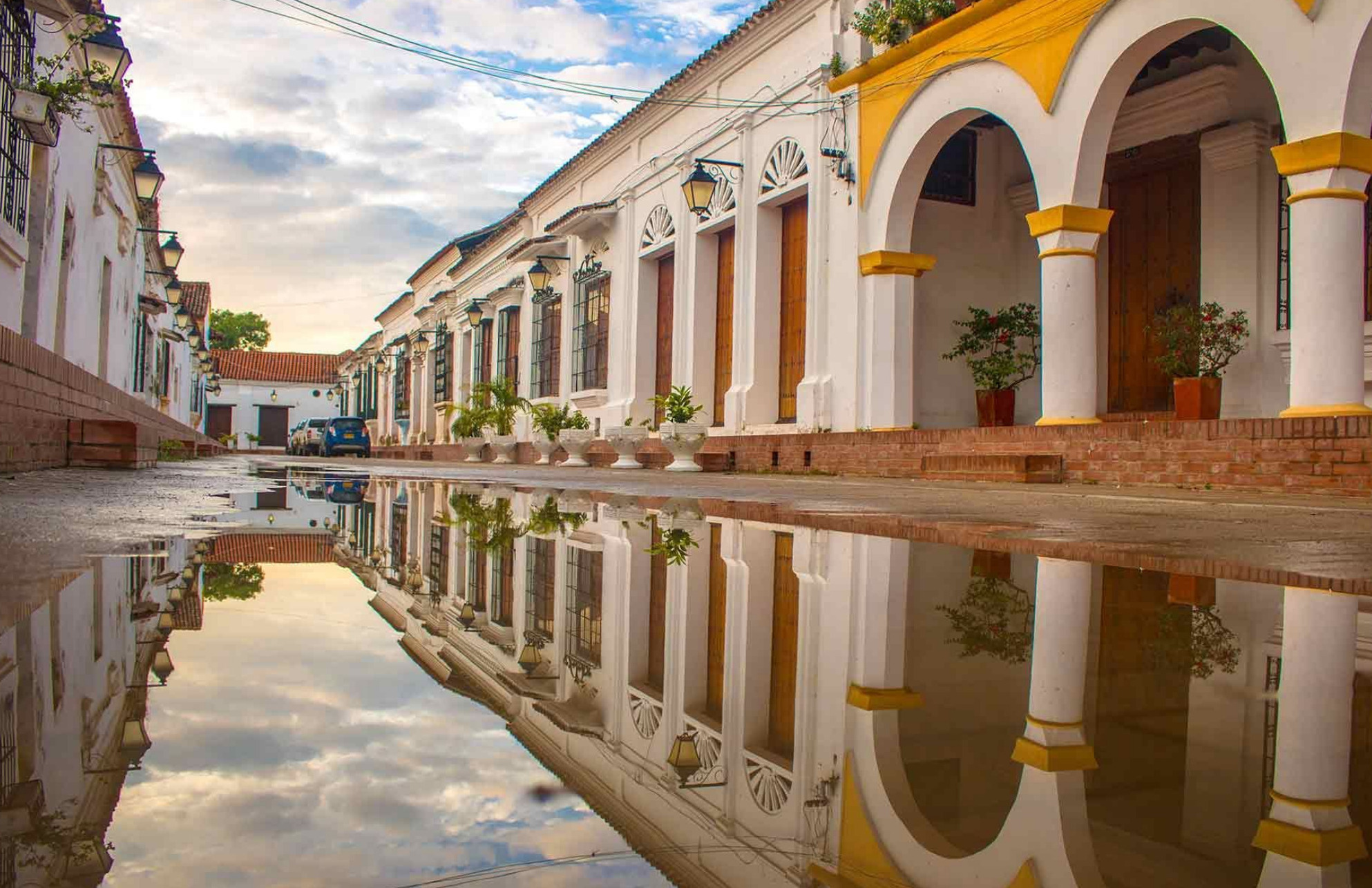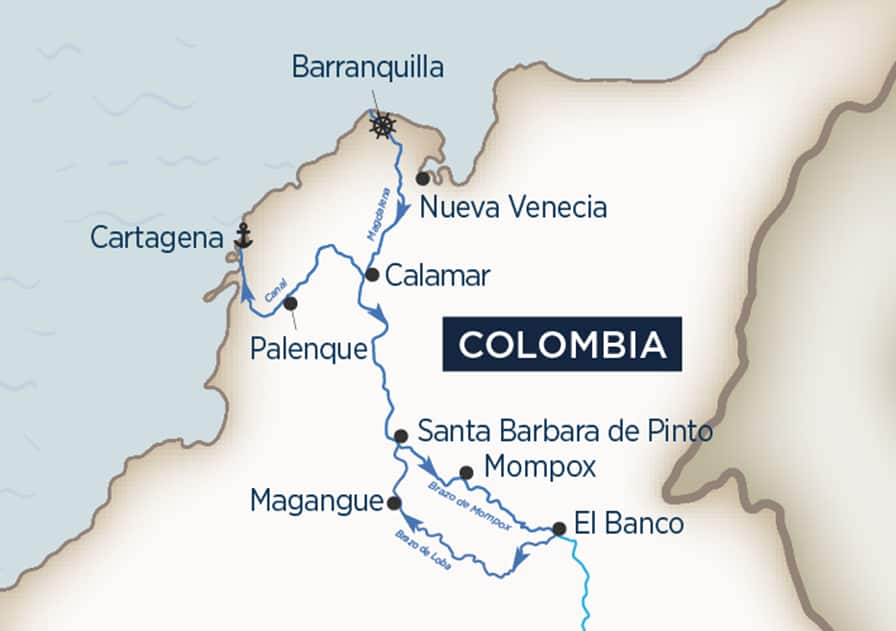Santa Cruz de Mompox: A Timeless Detour for Salty Souls

For sailors who have danced with the Caribbean winds, dropped anchor beneath Spanish fortresses, and chased the equator’s arc across Colombia’s coastlines, the idea of turning inland might seem counterintuitive. After all, most adventures on the water take place, well, on the water.
But sometimes, it’s worth stepping off the deck and into a different current , a slower, older rhythm that flows not with tides, but with stories. Welcome to Santa Cruz de Mompox, Colombia’s best-kept inland secret and one of the most rewarding side trips you can make from Cartagena or Santa Marta. This is not a port town. It’s a place marooned in time, tethered to the mighty Magdalena River, and glowing with the golden patina of centuries past.
You won’t sail your boat here. But once you visit, you’ll carry it with you long after your hull is back on saltwater. For the cruiser in search of real culture, deep history, and something a little off the gringo trail, Mompox is a detour worth taking.

1. A Sailor’s Reason to Go Ashore ( you could go by dinghy …)
From a nautical perspective, Colombia is already generous: coral-fringed bays, world-class cities like Cartagena, and tropical havens such as the Rosario Islands or Tayrona National Park. So why should a cruising sailor carve out several days to visit a landlocked town three hours up the river delta?
Because Mompox isn’t just another inland destination , it’s a preserved slice of Spanish colonial history, an unspoiled world that skipped industrialization and kept its soul intact. It’s the kind of place that reminds you why you started this journey in the first place: for discovery, perspective, and the stories that hide behind headlands.
Unlike coastal towns where tourism has reshaped daily life, Mompox offers something different. It’s lived-in, authentic, a place where nobody is trying to sell you a tour. It’s Colombia with its guard down, its heart wide open. And best of all , it’s still far enough off the radar that you won’t find it overrun.

2. How to Get There (and Where to Leave the Boat)
Getting to Mompox from the coast requires commitment, but it’s a well-trodden route for the determined traveler.
• From Cartagena: Leave your vessel in one of the city’s marinas (Club de Pesca, Club Náutico, or Marina Santa Cruz) and arrange a van or bus via Mompox Express or a trusted driver. The journey takes 6–8 hours depending on road conditions.
• From Santa Marta: Also possible with a combination of private car and river ferry. It’s a bit longer, but the road is scenic and remote.
• Best Time to Visit: November through March offers the driest conditions and most navigable roads. Avoid peak Semana Santa unless you’re going specifically for the religious processions.
You won’t miss the sea , because the town sits beside a broad tributary of the Magdalena River and has its own waterfront magic. It’s just freshwater, not brine.

3. Mompox Is Magic, Not a Museum
Walk into the heart of Mompox, and time slackens like a sail in dead air. There are no cruise ship terminals, no international chains, and no traffic lights. Horses still outnumber motorbikes on some streets, and iron balconies hang from whitewashed walls like lace.
Founded in 1537, Mompox once rivaled Cartagena in importance. It was a safe inland storehouse for gold and trade during the colonial era, but as the Magdalena’s flow shifted and transport routes changed, the town was bypassed , left out of the modern world. That abandonment became a blessing.
Unlike many colonial cities that were modernized, Mompox was preserved. Today, it’s a UNESCO World Heritage Site, one of the most authentic colonial towns in Latin America, with six major churches, a dreamy riverside malecón, and a plaza where little seems to have changed in 300 years.
But Mompox isn’t fossilized. People live here, celebrate, grieve, gossip, flirt, and fall in love here. You won’t walk through it like a museum , you’ll feel like you’ve wandered into a living novel.

4. Highlights for Cruisers Ashore
Even if your legs are still swaying from the last passage, Mompox will ground you. Here are some experiences that make the trip worthwhile:
a) The Riverside Walk at Sunset
Start at the old ferry dock and wander along the river. The light softens over the water, children play soccer in dusty alleys, and vendors sell fried snacks and tamarind juice under ancient trees. It’s serenity served slow, with just the right amount of edge.
b) Iglesia Santa Bárbara
This ochre-colored church is Mompox’s icon, with its unique Moorish bell tower and baroque altarpiece. Built in 1613, it’s still in use today and anchors the town’s spiritual identity.
c) Filigree Workshops
Mompox is world-renowned for its intricate gold and silver filigree jewelry, crafted by hand using centuries-old methods. Visit a working taller (workshop) and you’ll see artisans spinning metal into spiders, leaves, and sacred hearts, often barefoot and humming vallenato ballads.
d) Cemetery of Mompox
Far from gloomy, this whitewashed cemetery is poetic and peaceful. Tombstones here tell stories of explorers, poets, and revolutionaries. The silence, broken only by birds, is contemplative , a sailor’s place to pause.
e) Colonial Mansions Turned Boutique Stays
Stay at a 17th-century house turned into a boutique inn like Casa Amarilla or Portal de la Marquesa, where tiled courtyards and hammocks whisper stories of conquistadors and revolutionaries.
 5. A Revolutionary Pulse
5. A Revolutionary Pulse
Few visitors realize that Mompox played a critical role in Latin American independence. In fact, it was one of the first towns to declare total independence from Spain, on August 6, 1810 , six months before Cartagena.
Simón Bolívar, the Liberator himself, famously said, “If to Caracas I owe my life, then to Mompox I owe my glory.” He recruited hundreds of Mompoxanos to join his campaign to free Venezuela. That fiery spirit still simmers under the town’s quiet surface.
For history lovers, the Casa de los Apóstoles and local museums paint a rich picture of this revolutionary legacy. But even without visiting a single exhibit, you’ll feel it in the air , Mompox is proud, dignified, and just a little defiant.
6. For the Culture-Hungry
This is a town that sings. Literally. Music spills from courtyards, bars, and riverboats at all hours. Traditional vallenato , with its accordion-led heartache and bravado , still reigns, though cumbia, porro, and Afro-Colombian rhythms also ripple through the streets.
Cultural festivals abound:
• Semana Santa (Holy Week): One of the most elaborate and haunting in Latin America, with candlelit processions, centuries-old rituals, and intense emotion.
• Jazz Festival (October): An unexpected surprise , international jazz musicians converge in Mompox, blending improvisation with history in candlelit plazas.
• Fiesta de la Virgen del Carmen (July): A maritime-flavored celebration where riverboats are adorned like floats and the faithful set firecrackers on the water.
These aren’t tourist acts , they’re lifelines of local culture. Pull up a chair and you’ll likely be handed an aguardiente and pulled into a dance.

7. A Place for Reflection
After days at sea, your brain adjusts to wind, horizon, and motion. Coming inland, things slow differently. In Mompox, there’s time to reflect , not because you must, but because the town invites it.
Sit by the river at night and watch the moon flicker on the current. Listen to the hum of frogs and diesel panga engines in the distance. Here, you’re not measuring anchor chain or barometer drops. You’re watching the world unfold like smoke.
Mompox is one of the rare places where you remember that travel isn’t just about movement. It’s about meaning. And the farther you get from the coast, the closer you sometimes get to yourself.

8. Return to the Sea, Changed
There’s a moment every cruiser knows: standing on land, looking back toward the water, knowing you’re headed home , to your boat, your element, your moving house on the sea. After Mompox, that return is bittersweet. You’re rested. You’ve breathed deeper. You’ve remembered something.
The sea will still be there , your anchorages, your vessel in the marina attached with docklines, your sails. Take the detour. Mompox is waiting
